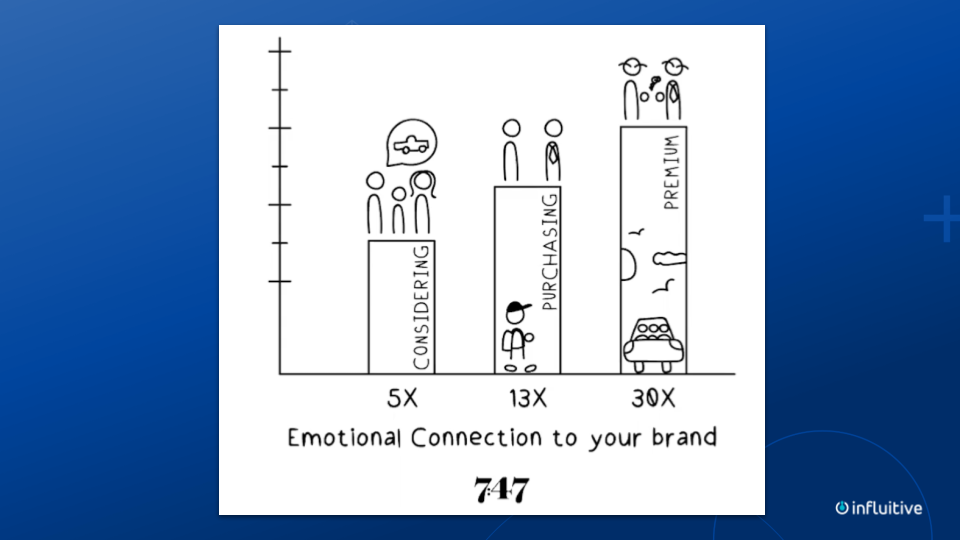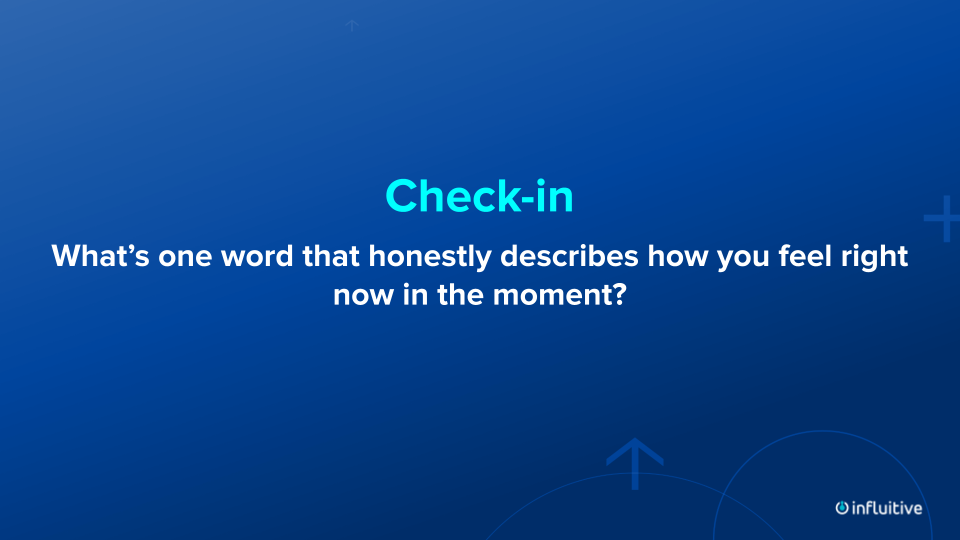In today’s competitive landscape, creating strong emotional connections with customers is essential for companies to drive advocacy and build loyalty. One effective way to achieve this is by incorporating gratitude into your customer marketing strategies.
Gratitude not only fosters positive personal feelings but also inspires engagement and productivity, and influences business value.
We tackled this head-on in our recent webinar with Wall Street Journal best-selling author Chris Schembra and Ari Hoffman, VP of Customer Marketing and Advocacy at Influitive. In this blog post, we’ll explore the 8 steps you need to take to harness the power of gratitude in customer marketing to deepen customer relationships and drive business growth.
Step 1: Understand the Importance of Emotional Connection
To start, it’s crucial to recognize the significance of emotional connection in customer relationships. While customer marketing often focuses on aspects like product features and pricing, studies have shown that customers with an emotional connection to a brand are more likely to consider purchasing, make repeat purchases, and even pay a premium. By tapping into customers’ deep and often unspoken emotional needs, you can maximize customer value.

Step 2: Prioritize Employee Engagement
Low employee engagement can lead to low customer engagement, so it is essential to prioritize employee engagement in order to create a positive and magnetic environment that resonates with customers. Research has indicated that employees who feel appreciated and valued at work are more likely to be productive and engaged.

Consider implementing employee advocacy initiatives to express gratitude within your team, such as organizing regular appreciation events or sending personalized thank-you notes. This not only boosts employee well-being but also enhances their commitment to providing excellent customer experiences.
Step 3: Ensure Gratitude is Heard and Appreciated
Remember, gratitude given is not always gratitude heard. It is important to understand and acknowledge the recipient’s preferred language of appreciation. Just as people have different love languages, individuals also have unique preferences for how they like to receive gratitude. Some common languages of appreciation in the workplace include quality time, acts of service, gifts, words of affirmation, and physical touch.
By expressing gratitude in a way that resonates with your customers, you can ensure that it is heard and appreciated, leading to stronger emotional connections. And if you’re not sure, don’t be afraid to ask!
It’s also important to remember the difference between value and value realization. While your product or service may offer value to a customer, it’s essential that the customer realizes and acknowledges that value for it to be effective. The realization of value is what impacts customer satisfaction and decisions, such as whether to continue with a service.
Gratitude plays a significant role in value realization because when customers feel appreciated and acknowledged, they are more likely to recognize and realize the value they are receiving.
Step 4: Deepen Emotional Connections with Surprise and Delight
Surprise and delight initiatives can help deepen emotional connections with your customers. Implement programs that go beyond expectations, such as personalized videos or gifts to celebrate special occasions or achievements.
Consider involving executives in these initiatives to bridge the gap between emotionally invested customers and decision-makers. You could have the executive film a surprise video highlighting their employee’s latest milestone with your software or a personal milestone such as getting married. Building connections with decision-makers increases advocacy and influence in the purchasing decision.
Step 5: Practice Active Listening
To truly understand and connect with your customers, practice active listening and empathy. Take the time to ask about their well-being and listen attentively to their responses. Consider adding a check-in question at the start of each customer call can help you establish this and bring psychological safety into the space.

Understanding customers’ needs and desires on a deeper level helps you tailor your offerings and interactions to create a more meaningful customer experience. By demonstrating genuine empathy, you can foster stronger emotional connections and long-lasting customer relationships.
Step 6: Use Technology to Scale
Leveraging technology to scale gratitude practices ensures consistency throughout your customer interactions. Use video recording and editing software to create sizzles or compilations of surprise and delight moments. Additionally, consider implementing a customer advocacy platform to streamline your gratitude initiatives. These platforms allow you to track and measure the impact of your gratitude efforts while providing resources on the language of appreciation in customer marketing.
Step 7: Be Persistent and Consistent
Implementing gratitude initiatives may face resistance initially, but maintaining persistence and consistency is key. Gratitude is contagious and can create a positive environment that inspires others to express gratitude as well. Celebrate small wins and involve your team in recognizing and appreciating customers. These can be done on customer calls, inside internal communications tools like Slack or Teams, or by simply emailing your customer’s executive sponsor to share a few highlights from working with their direct report. By consistently practicing gratitude, you can nurture meaningful connections and reinforce a culture of appreciation within your organization.
Step 8: Evaluate Your Impact
Regularly evaluate the impact of your gratitude initiatives on customer satisfaction, loyalty, and advocacy. Monitor key metrics, such as customer purchase intentions, share of wallet, sales revenue, and sales growth. Other KPIs you can track include customer retention rates, customer satisfaction scores (CSat), referral rates, and the number of customer advocates your business has. Use data analytics to measure the effectiveness of your gratitude practices and identify areas for improvement. Continuously refine and evolve your customer marketing strategy to maximize the value of gratitude in driving business growth.
Conclusion
Gratitude is a powerful tool that can enhance customer relationships and differentiate your brand in a competitive market. By prioritizing emotional connections, practicing active listening and empathy, and implementing surprise and delight initiatives, you can create a culture of gratitude that leads to stronger customer advocacy and loyalty.
Remember to be consistent, persistent, and open to evolving your gratitude practices based on customer feedback and data insights. Start incorporating gratitude into your customer marketing strategy today and witness the positive impact it has on your business.
—
Listen to the full webinar recording to hear more from Chris and Ari. Be sure to check out our Webinars page for upcoming customer spotlights.











































